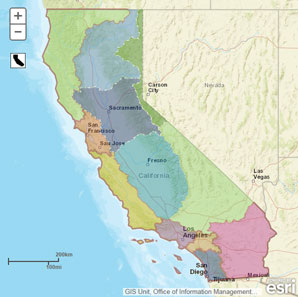California Water Boards' Annual Performance Report - Fiscal Year 2017-18
REGULATE: WATER QUALITY CERTIFICATION PROGRAM
GROUP:
401 Water Quality Certifications
401 Water Quality Certifications
MEASURE 3, 4 :
MEDIAN NUMBER OF DAYS BETWEEN RECEIPT OF AN INDIVIDUAL 401 APPLICATION AND INITIAL REGULATORY ACTION ON THAT APPLICATION
MEDIAN NUMBER OF DAYS BETWEEN RECEIPT OF ALL SUPPLEMENTAL INFORMATION AND INDIVIDUAL 401 CERTIFICATION, OR DENIAL
MEDIAN NUMBER OF DAYS BETWEEN RECEIPT OF AN INDIVIDUAL 401 APPLICATION AND INITIAL REGULATORY ACTION ON THAT APPLICATION
MEDIAN NUMBER OF DAYS BETWEEN RECEIPT OF ALL SUPPLEMENTAL INFORMATION AND INDIVIDUAL 401 CERTIFICATION, OR DENIAL
MESSAGE:
| Application Received | Measure |
Staff analyzes all project information and consults with the applicant and other agencies to ensure impacts are avoided and minimized to the greatest possible extent, and to require appropriate compensatory mitigation for unavoidable impacts | Measure |
Certification Issued or Denied |
MEASUREMENTS - Data Last Updated on:
FusionCharts will load here
FusionCharts will load here
WHAT THE MEASURE IS SHOWING
WHY THIS MEASURE IS IMPORTANT
TECHNICAL CONSIDERATIONS
- Data Source: CIWQS. Period July 1, 2017 to June 30, 2018 .
- Data Definitions: Measure 3: is the median number of days between receipt of an individual 401 application and initial regulatory action. A regulatory action includes the following:
- Denied, denied without prejudice, or withdrawn
- Notice of incomplete application
- Notice of complete application
- Certification issued
- Supplemental (additional) information request
- Measure 4: is the average number of days between the latest of two events: 1) the application complete date or 2) the receipt of all supplemental information and individual 401 certification issuance or denial, in the fiscal year (i.e., includes applications with application complete and supplemental information received dates in the prior fiscal year but made effective in FY 17-18 ).
- References:
Glossary
- 401 Water Quality Certification and Wetlands Program
- The WQC Program protects all waters in its regulatory scope but has special responsibility for wetlands, riparian areas, and headwaters because these waterbodies have high resource value, are vulnerable to filling and are not systematically protected by other programs. We are involved with protection of special-status species and regulation of hydromodification impacts. The Program encourages basin-level analysis and protection because some functions of wetlands, riparian areas, and headwater streams - including pollutant removal, flood water retention, and habitat connectivity - are expressed at the basin or landscape level. Most projects are regulated by the Regional Water Quality Control Boards (Regional Boards). The State Water Resources Control Board (State Water Board) directly regulates multi-regional projects and supports and coordinates the Program statewide.
- Application
- Those seeking a water quality certification file an application with the appropriate regional board, depending on project location.
- CIWQS
- The California Integrated Water Quality System (CIWQS) is a web-based relational database for core regulatory data. Using this system, both staff and the public can access data related to places of environmental interest, permits and other orders, inspections and violations and enforcement activities.
- Discharge of Dredge Material
- Discharge of Dredged Material means addition of dredged material, material that is excavated or dredged from waters of the state, including redeposit of dredged material other than incidental fallback within, to the waters of state.
- Discharge of Fill Material
- Means the addition of fill material has the effect of replacing any portion of a water of the state with dry land or changing the bottom elevation of any portion of a water of the state.
- Executive Order W-59-93, commonly referred to as California's "no let loss" policy for wetlands.
- In accordance with Executive Order W-59-93, the Water Quality Certification Program works to ensure that the Water Board's regulation of dredge and fill activities will be conducted in a manner "to ensure no overall net loss and long-term net gain in the quantity, quality, and performance of wetlands acreage and values." The Water Boards are committed to increasing the quantity, quality, and diversity of wetlands that qualify as waters of the state.
- Regulatory Timeclocks
- According to state and federal regulation the following regulatory time clocks apply:
30 days-Within 30 days of receipt Water Board staff deem an application complete or incomplete.
60 days-Once an application has been approved, Water Board staff have 60 days to certify the project or ask for a time extension from the United States Army Corps of Engineers.
180 days-Water Board staff must certify or deny a project within 180 days after the latest of two events: issuance of a complete application, or 180 days from a lead agency CEQA determination. - Water Quality Certification Program Goals
- Goal 1: To provide efficient, reliable and consistent service to the public
Goal 2: To protect the functions and beneficial uses of waters from dredge and fill/excavation activities
Goal 3: To ensure dredge and fill/excavation activities do not cause net loss of wetlands



